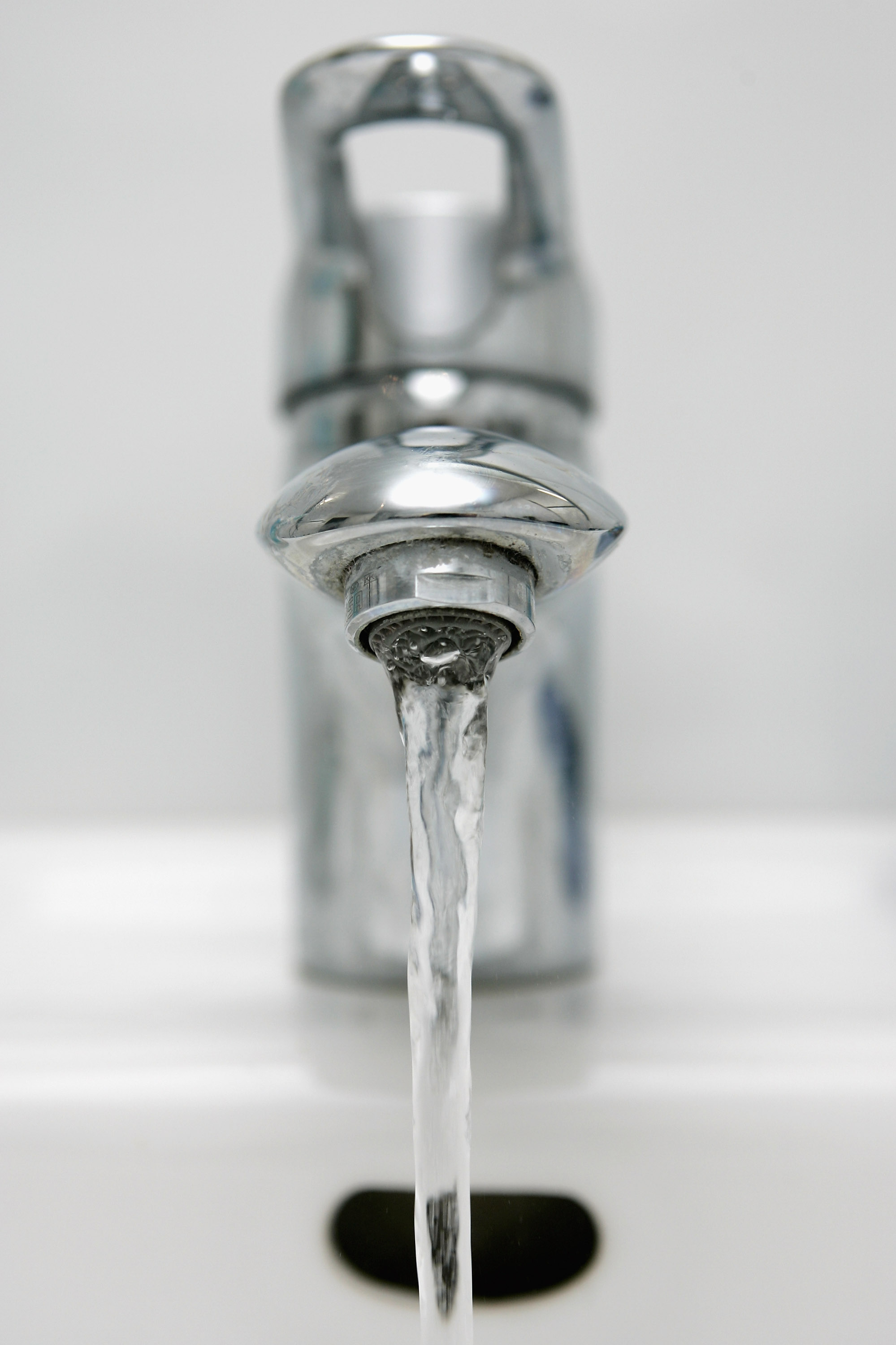Contaminated Drinking Water: Millions Of Americans At Risk, Report Reveals

Table of Contents
Sources of Drinking Water Contamination
Contaminated drinking water stems from various sources, posing significant threats to public health. Understanding these sources is crucial in mitigating the risks associated with water contamination.
Lead Contamination
Lead in drinking water is a particularly insidious threat, especially to children. Lead leaches into water from old lead pipes, lead solder in older plumbing systems, and even industrial discharge. Exposure to lead, even at low levels, can cause irreversible neurological damage, particularly in children, impacting cognitive development and academic performance.
- Symptoms of lead poisoning: Headaches, abdominal pain, fatigue, memory loss, developmental delays, learning disabilities.
- Areas most affected by lead contamination: Older cities with aging infrastructure often show higher levels of lead contamination in their water supply. Flint, Michigan, serves as a tragic example of the devastating effects of lead contamination.
- Government regulations regarding lead levels: The Environmental Protection Agency (EPA) sets the acceptable level of lead in drinking water, but these regulations are constantly under review and improvement is needed to ensure safe drinking water for all.
Pesticide and Herbicide Runoff
Agricultural practices contribute significantly to water contamination. Pesticide and herbicide runoff from farms contaminates rivers, lakes, and groundwater, eventually finding its way into our drinking water supplies. These chemicals pose significant health risks, ranging from mild irritation to severe organ damage.
- Common pesticides and herbicides found in water: Atrazine, glyphosate, chlorpyrifos are among the commonly detected contaminants.
- Health risks associated with exposure: These chemicals can disrupt hormones, damage the nervous system, and increase the risk of certain cancers.
- Effective water filtration methods to remove pesticides: Activated carbon filters and reverse osmosis systems can effectively remove many pesticides and herbicides from drinking water.
Microbial Contamination
Bacterial, viral, and parasitic contamination is another major concern. Fecal contamination from failing sewage systems, inadequate sanitation practices, and animal waste can introduce harmful microorganisms into water sources.
- Common waterborne illnesses: E. coli, Salmonella, Giardia, and Cryptosporidium are examples of pathogens that cause serious waterborne diseases.
- Symptoms of waterborne diseases: Diarrhea, vomiting, fever, abdominal cramps, dehydration.
- Importance of water treatment and sanitation: Proper water treatment and sanitation are essential to prevent outbreaks of waterborne illnesses.
Industrial Waste Contamination
Industrial discharges often contain toxic chemicals and heavy metals that severely contaminate water sources. These pollutants can persist in the environment for years, causing long-term health problems.
- Examples of industrial pollutants: Heavy metals like lead, mercury, and cadmium; various industrial chemicals and solvents.
- Long-term health effects: Cancer, kidney damage, neurological disorders, reproductive problems.
- Government regulations for industrial waste disposal: Stringent regulations are in place to control industrial waste discharge, but enforcement and monitoring remain crucial.
Health Risks Associated with Contaminated Drinking Water
The health risks associated with contaminated drinking water are significant and far-reaching.
Short-Term Effects
Short-term effects of consuming contaminated water can include nausea, vomiting, diarrhea, and severe dehydration. These symptoms can range in severity, depending on the type and amount of contaminants ingested.
Long-Term Effects
Long-term exposure to contaminated water can lead to a range of chronic health issues. These include an increased risk of various cancers, kidney disease, neurological damage, and developmental problems in children. The long-term effects of water contamination are often insidious and difficult to detect.
Vulnerable Populations
Infants, pregnant women, the elderly, and individuals with compromised immune systems are particularly vulnerable to the effects of contaminated drinking water. These groups often suffer more severe consequences from exposure to contaminants.
Protecting Yourself from Contaminated Drinking Water
Taking proactive steps to ensure you have access to safe drinking water is crucial.
Home Water Filters
Home water filters can significantly reduce the risk of exposure to various contaminants. Carbon filters are effective for removing chlorine and some organic chemicals, while reverse osmosis systems provide a higher level of purification, removing a wider range of contaminants.
Bottled Water
Bottled water offers an alternative, but it's important to consider the environmental impact and potential cost. Choose reputable brands and ensure the water undergoes proper filtration and purification processes.
Public Water Supply Information
Check your local water quality reports regularly to stay informed about the quality of your tap water. Contact your water utility if you have concerns or questions about contaminated drinking water or water quality testing in your area.
Conclusion
The prevalence of contaminated drinking water in the United States is a serious public health concern. The report’s findings underscore the urgent need for improved water infrastructure, stricter regulations, and increased awareness among the public. Protecting yourself and your family from the dangers of contaminated drinking water requires vigilance and proactive measures. Test your water, install a home water filter, contact your local water authority for information, and demand action to ensure safe and clean drinking water for everyone. Access to safe drinking water is a fundamental human right, and securing it should be a top priority for public health.

Featured Posts
-
 Dodgers 8 0 Rout Ohtanis Walk Off Blast Seals Historic Defeat
May 16, 2025
Dodgers 8 0 Rout Ohtanis Walk Off Blast Seals Historic Defeat
May 16, 2025 -
 Foot Locker Summer Campaign Celebrating Local Voices
May 16, 2025
Foot Locker Summer Campaign Celebrating Local Voices
May 16, 2025 -
 Maye Musk On Elon Musks Wealth A Look At The Familys Financial Success
May 16, 2025
Maye Musk On Elon Musks Wealth A Look At The Familys Financial Success
May 16, 2025 -
 Nike Air Max Dunks Jordans And More Up To 40 Off At Foot Locker
May 16, 2025
Nike Air Max Dunks Jordans And More Up To 40 Off At Foot Locker
May 16, 2025 -
 How To Watch Barcelona Vs Girona La Liga Match Free Live Stream Tv Guide And Kick Off Time
May 16, 2025
How To Watch Barcelona Vs Girona La Liga Match Free Live Stream Tv Guide And Kick Off Time
May 16, 2025
